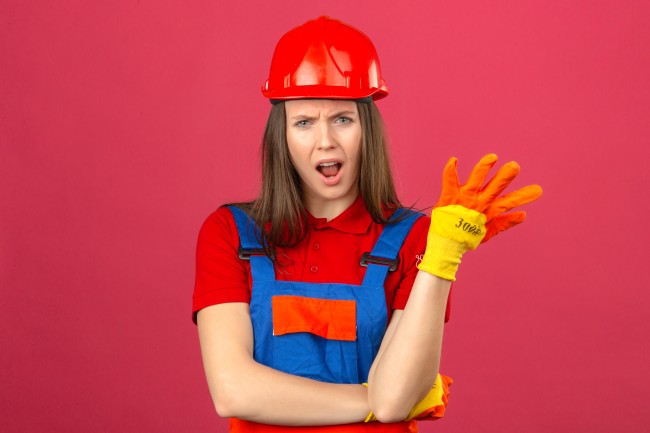Safety wear, also known as personal protective equipment (PPE), is an essential component in many workplaces, industries, and outdoor activities.
PPE serves as a crucial barrier between the wearer and potential hazards, providing protection from injuries, illnesses, and other risks associated with various tasks.
In this article, we will discuss the importance of safety wear, explore different types of PPE, and discuss best practices for selecting, using, and maintaining safety equipment.
The Significance of Safety Wear
The primary purpose of safety wear is to protect workers and individuals from hazards that could result in injuries, illnesses, or fatalities. PPE minimizes the risk of exposure to harmful substances, extreme temperatures, sharp objects, and other potential dangers.
Additionally, safety wear is not only essential for the well-being of workers, but it also plays a vital role in maintaining a safe and productive work environment, thus reducing downtime and boosting overall productivity.
Legal Requirements and Regulations
Various laws and regulations, such as the Occupational Safety and Health Administration (OSHA) standards in the United States, mandate the use of appropriate safety wear in certain industries and workplaces.
Employers must provide suitable PPE and ensure that their employees are adequately trained in its proper usage.
Public Awareness and Perception
Safety wear is not only about complying with legal requirements; it is also about creating a positive perception of a company or industry. A strong commitment to safety can enhance a company’s reputation and foster public trust.
Types of Safety Wear
Safety wear comes in a wide variety of forms, designed to address specific hazards and protect different body parts.
1. Head Protection
- Hard hats: These protect against impacts, falling objects, and electric shocks. They are commonly used in construction, mining, and manufacturing industries.
- Bump caps: Lightweight caps that provide protection against minor bumps and scrapes, often used in warehouses and automotive repair shops.
2. Body Protection
- High-visibility clothing: Brightly colored vests, jackets, and overalls that increase a worker’s visibility, reducing the risk of accidents in low-light or high-traffic areas.
- Flame-resistant clothing: Provides protection against burns and heat-related injuries, commonly used in industries such as welding and firefighting.
- Chemical-resistant suits: These suits offer protection against hazardous chemicals and substances, often used in chemical processing and hazardous waste cleanup operations.
- Aprons and coveralls: Designed to shield the body from dirt, grime, and minor injuries, they are used in a wide range of industries, including food processing, automotive repair, and maintenance.
3. Foot Protection
- Safety shoes and boots: Equipped with reinforced toe caps and slip-resistant soles, safety footwear offers protection against impact, puncture, and slips, making them essential in construction, manufacturing, and other heavy-duty environments.
- Rubber boots: Providing protection against chemicals, liquids, and slips, rubber boots are used in industries such as agriculture, food processing, and chemical handling.
4. Eye and Face Protection
- Safety glasses: Designed to shield the eyes from flying debris, dust, and chemicals, safety glasses are essential in laboratories, woodworking, and metalworking environments.
- Goggles: Offering a more secure fit and better protection against liquids and gases, goggles are commonly used in chemical handling and medical settings.
- Face shields: These protect the entire face from flying debris, chemical splashes, and high heat. They are used in welding, metalworking, and chemical processing industries.
5. Hearing Protection
- Earplugs: Disposable or reusable plugs that fit inside the ear canal, providing protection against loud noises in industries such as construction and manufacturing.
- Earmuffs: These cover the entire ear and offer a higher level of noise reduction than earplugs. They are used in environments with prolonged exposure to loud noise.
6. Hand Protection
- Gloves: Available in various materials and designs, gloves protect against cuts, punctures, abrasions, chemicals, and extreme temperatures. They are used in numerous industries, including construction, manufacturing, and healthcare.
7. Respiratory Protection
- Disposable masks: These offer protection against dust, fumes, and mists, and are commonly used in construction and woodworking.
- Respirators: Designed to filter out harmful gases and particles, respirators are essential in industries such as firefighting, chemical processing, and asbestos removal.
Selecting the Right Safety Wear
1. Hazard Assessment
Before choosing safety wear, a thorough hazard assessment should be conducted to identify potential risks and determine the appropriate type of PPE required. This process should involve consultation with employees, safety professionals, and, if necessary, industry experts.
2. Fit and Comfort
Safety wear should be comfortable and well-fitting to ensure optimal protection and prevent interference with the wearer’s ability to perform tasks. Ill-fitting PPE can cause discomfort and reduce its effectiveness, making proper sizing and adjustment crucial.
3. Quality and Standards
When selecting safety wear, it is essential to choose products that meet or exceed the relevant safety standards and regulations. High-quality PPE made from durable materials will provide better protection and last longer, reducing the need for frequent replacements.
Proper Use and Maintenance of Safety Wear
1. Training and Education
Employers should provide comprehensive training and education on the correct usage, limitations, and care of safety wear. This includes instruction on how to put on, adjust, and remove PPE, as well as recognizing signs of wear and damage that may compromise its effectiveness.
2. Inspection and Replacement
Regular inspection of safety wear is crucial to ensure that it remains in good working condition. Damaged or worn-out PPE should be replaced immediately to maintain optimal protection.
3. Cleaning and Storage
Proper cleaning and storage of safety wear are vital to prolong its lifespan and maintain its effectiveness. Users should follow the manufacturer’s guidelines for cleaning and storing PPE, ensuring that it is kept in a clean, dry, and well-ventilated area.
Conclusion:
Safety wear plays a vital role in preventing injuries, illnesses, and fatalities across various industries and workplaces.
By understanding the different types of PPE available and following best practices for selection, usage, and maintenance, employers and employees can create a safer work environment that promotes health, well-being, and productivity.

